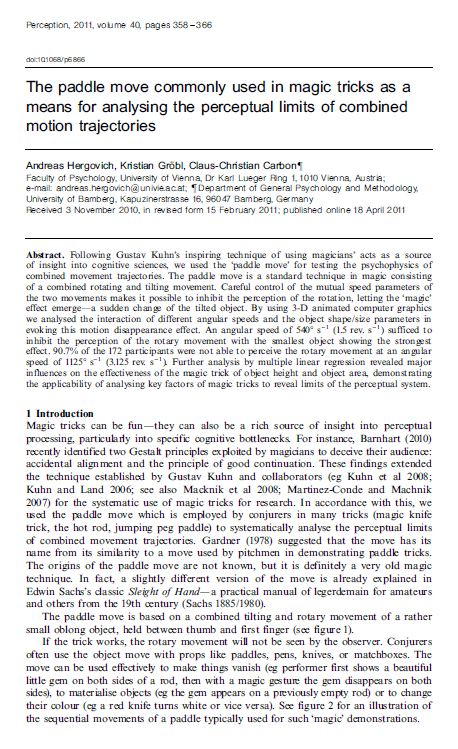
Andreas Hergovich, Kristian Grubl e Claus-Christian Carbon
The paddle move commonly used in magic tricks as a means for analysing the perceptual limits of combined motion trajectories
Perception, N. 3, Vol. 40, march 2011, pp. 358-266.
2 volumes available
Following Gustav Kuhn's inspiring technique of using magicians' acts as a source of insight into cognitive sciences, the authors used the "paddle move" for testing the psychophysics of combined movement trajectories. The paddle move is a standard technique in magic consisting of a combined rotating and tilting movement. Careful control of the mutual speed parameters of the two movements makes it possible to inhibit the perception of the rotation, letting the "magic" effect emerge-a sudden change of the tilted object. By using 3-D animated computer graphics we analysed the interaction of different angular speeds and the object shape/size parameters in evoking this motion disappearance effect. An angular speed of 540° per second sufficed to inhibit the perception of the rotary movement with the smallest object showing the strongest effect. 90.7% of the 172 participants were not able to perceive the rotary movement at an angular speed of 1125 ° per second. Further analysis by multiple linear regression revealed major influences on the effectiveness of the magic trick of object height and object area, demonstrating the applicability of analysing key factors of magic tricks to reveal limits of the perceptual system.
Language
English